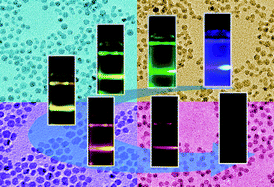A facile and general approach for the multicolor tuning of lanthanide-ion doped NaYF4 upconversion nanoparticles within a fixed composition†
Abstract
In this paper, we report a general and facile approach for subtly tuning the multicolor output of

* Corresponding authors
a
State Key Laboratory of Fine Chemicals, Dalian University of Technology, Dalian, China
E-mail:
wusuli@dlut.edu.cn
Fax: +86 411 39893621
Tel: +86 411 39893621
In this paper, we report a general and facile approach for subtly tuning the multicolor output of

 Please wait while we load your content...
Something went wrong. Try again?
Please wait while we load your content...
Something went wrong. Try again?
W. Niu, S. Wu and S. Zhang, J. Mater. Chem., 2010, 20, 9113 DOI: 10.1039/C0JM01879A
To request permission to reproduce material from this article, please go to the Copyright Clearance Center request page.
If you are an author contributing to an RSC publication, you do not need to request permission provided correct acknowledgement is given.
If you are the author of this article, you do not need to request permission to reproduce figures and diagrams provided correct acknowledgement is given. If you want to reproduce the whole article in a third-party publication (excluding your thesis/dissertation for which permission is not required) please go to the Copyright Clearance Center request page.
Read more about how to correctly acknowledge RSC content.
 Fetching data from CrossRef.
Fetching data from CrossRef.
This may take some time to load.
Loading related content
